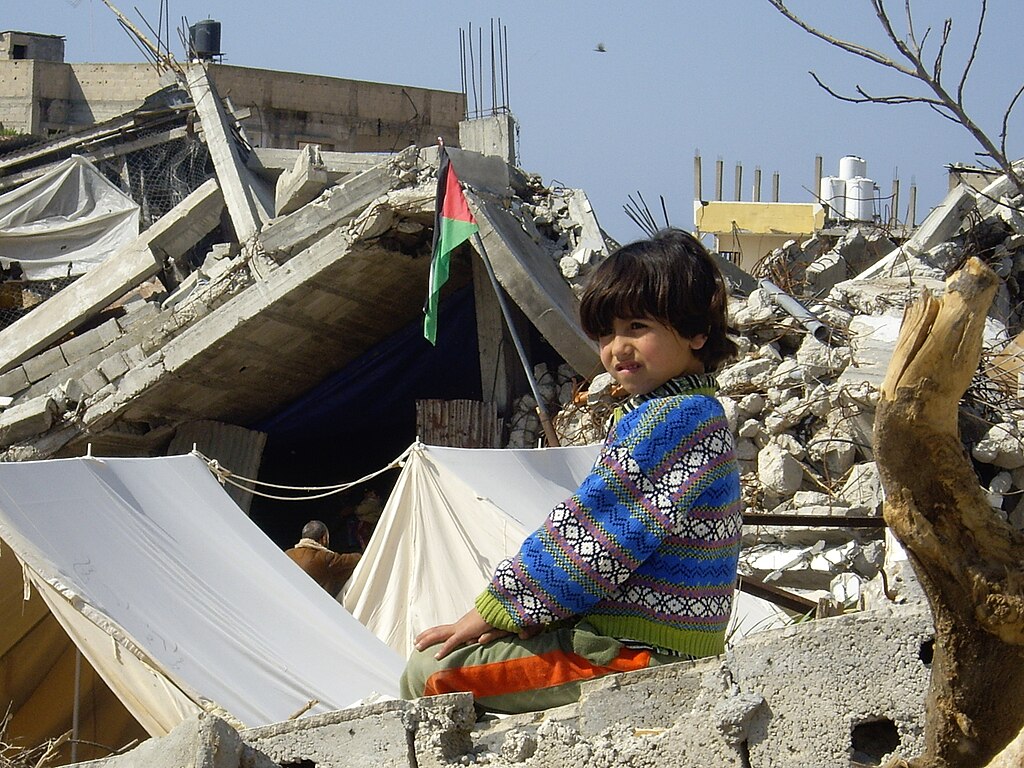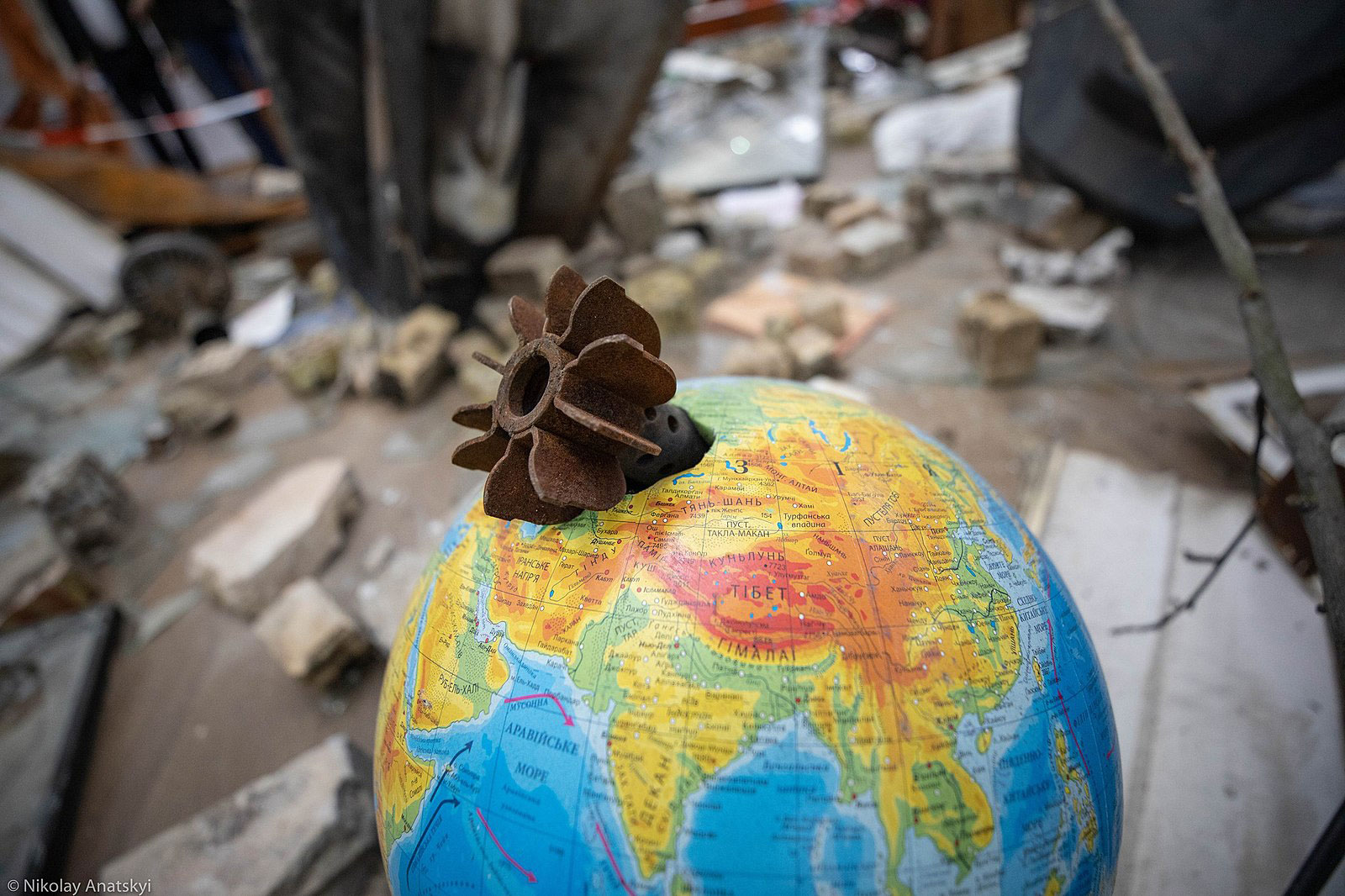Ethics and Insights: Whose Lives Matter? - Global ECCO
Ethics and Insights: Whose Lives Matter?
Dr. Siamak Naficy, US Naval Postgraduate School
6/7/24
(Note: This article was originally written in November 2023)
In the horrific panorama of recent global events, the world has been witness to a grim narrative of violence, displacement, and moral ambiguity. From the ethnic cleansing in Nagorno-Karabakh, which displaced over 120,000 Armenian refugees, to the ongoing dehumanization in conflicts such as the Russian invasion of Ukraine and the retaliatory but indiscriminate bombings in Gaza, the stark contrast in how these incidents are portrayed by news media and government outlets reveals a troubling reality.[1] Behind the facade of official state narratives and media coverage lies a pervasive politicization of humanity itself. These events and their surrounding coverage not only expose the stark lines societies draw in defining humanity but also beckon a crucial question: how can we discern between mere killing and the abhorrent crime of murder when layered biases cloud our judgment?
These incidents and the accompanying contradictions and accusations of double standards in both official state and media coverage, in which, for example, the killing of Israeli civilians is rightly portrayed as a heinous crime while the killing of thirty times as many Palestinian civilians is portrayed as unfortunate but necessary collateral damage, underline a disturbing truth: the delineation of who is considered fully human, who deserves protective rights, and who merits our attention has always been politicized by the state.[2] We are seeing plain evidence of the lines that societies draw in making these determinations. But given how little agency we have over many of the personal and cultural biases that shape our worldview—including personal life history, cultural norms, and evolved psychological predilections—how can we hope to distinguish between murder and killing in the absence of generally accepted criteria?
To illustrate this, consider the maps below: one (left) highlights in blue the states that recognize the State of Palestine and the other (right) indicates states opposing Chinese oppression of the Uyghur population in Xinjiang in red.

Although much of the overlap in support in Eastern Europe comes from those nations that were still Communist when they recognized Palestine in the 1980s, these maps help highlight the dichotomy between who is labeled “good” and who is labeled “bad” in global politics today.[3]
In the realm of philosophy, particularly in ethics and morals, the question persists: given our biases for in-group favoritism—with all of the social pressures, life experiences, restrictions, and impulses we have that overlay millennia of evolutionary adaptations—how do we attempt to ethically differentiate between the killing and the murder of outgroups?[4]
Noted moral, political, and theological philosopher Alasdair MacIntyre critiques modern ethicists for proposing complex scenarios to test moral concepts without offering viable solutions, leaving such moral dilemmas unresolved and liable to relativist sophistry. [5] While traditional ethical dilemmas like the classic museum fire scenario or the endless iterations of the trolley problem may captivate our thoughts, they often fall short of reflecting real-world challenges. [6] Arguably, a more practical ethical conundrum might revolve around daily decisions, such as choosing what to have for breakfast. Yet, for those in the national security domain, the pressing moral dilemma lies in defining the boundaries between legitimate and illegitimate targets in conflict situations to avoid crossing the line into murder.
It’s important to take a moment here to clarify what I mean by “ethics” and “morals.” The words are often used interchangeably, and different people sometimes stress them differently, which makes them confusing. Ethos is a Greek word that means a kind of character or mode of being. To be ethical is to express yourself clearly and well and truly. Is your outlook and behavior representative of you? Is it cognizant or harmonious with your surroundings and yourself? Moral is a Latin word that means to be in harmony with or to follow the rules of your society. It has much more emphasis on the exterior and laws: you can know, for instance, whether or not you're breaking a law. Ethics is less heavily weighted towards the right and wrong, good and bad, legal and illegal, and much more heavily weighted towards diversity and variation and all kinds of deviations. Morality is the set of social norms or rules that exist within your cultural setting, whereas ethics is a body of considered norms or rules that results from applying reason to existing cultural norms to render them more coherent or consistent. We each have a personal ethos that is, at its essence, who we are. Morals, in contrast, cause us to think in terms of legal and illegal, good and bad, and this notion of whether you are doing the right thing. Morals tend to lead us to judge issues through the lens of binary oppositions.
In the realm of moral philosophy, the family of theories called utilitarianism, championed by figures like Jeremy Bentham and John Stuart Mill, attempts to solve moral dilemmas by focusing on the consequences of our actions. [7] In this view, we should act in ways that ensure the greatest happiness for the greatest number of beings. For this reason, utilitarianism is sometimes called the “arithmetic theory of morality,” by which we simply add up the “good” created and subtract the pain caused to see whether our actions were “moral.” Other moral theories often revolve around rules, duties, character, motivations, and virtues. A key concern in these debates is the balance between actions and their outcomes.
The philosopher Elizabeth Anscombe, whose ideas kicked off a whole new movement in moral philosophy, can be helpful here. [8] She was someone who vehemently opposed utilitarianism and those she called consequentialists. Anscombe argues that justifying immoral actions for the sake of “good consequences” is perilous. As the old aphorism goes, “the road to Hell is paved with good intentions.”
Anscombe addresses various weak arguments surrounding the dilemma of war, killing, and murder. She emphasizes the need to draw a clear line between the innocent and the guilty in war situations, categorically rejecting the idea that some situations blur this distinction. It is this weak argument—that it's impossible to draw an exact line between the innocent and the guilty in war, between combatants and non-combatants in conflict—that she calls “a bad joke.” [9] She insists that we must draw a line, even and especially when it's difficult. The essence and real value of moral reasoning lies in these principles.

But she is also quite straightforward and pragmatic about all this—we’re usually going to get it wrong in some degree, but that doesn’t excuse not knowing what is right. She points to events like the atomic bombings of Hiroshima and Nagasaki to highlight that some acts, regardless of their intended outcomes, remain morally indefensible. [10] While acknowledging the argument that this was done to bring the Second World War to a more rapid close and thus arguably save more lives, Anscombe maintained that this action could not be justified by the aim of ending the war—even if more lives were saved in the end. Some actions, she argues, are so fundamentally wrong that no expected consequences can justify them. Torture is another example of unjustifiable harm.
Anscombe's central argument is unequivocal: choosing to kill the innocent as a means to an end is always murder, and murder is one of the gravest moral transgressions. [11] This understanding does not hinge upon treaties, legislation, or abstract reasoning but is universally acknowledged. Anscombe clarifies that "innocent" refers to those not causing harm, not to those who are “guiltless,” emphasizing the importance of distinguishing between defenseless civilian non-combatants and combatants capable of harm. Thus, shooting the unarmed villager who sheltered a fighter but is not himself fighting is murder, while shooting the fighter is not. Even though, reflexively, this example might seem like a gray area, reflectively we should see a difference between these two actors, even if they both regard us as “enemies.”
Anscombe believed that there's a linguistic confusion at the root of this dilemma. Civilian non-combatants, like enemy prisoners of war, ought to be protected because they are not harming, not because they're not personally culpable. They're protected not because they are virtuous, or even because they deserve good treatment; they're protected because they're defenseless; they are in our power and unable to resist us, unable to harm us. [12]
However, in this reading, conscripts who are drafted and forced to fight for their government are not innocent because they are situationally able to harm just as much as volunteer combatants. The same is true for sleeping enemy soldiers. Anscombe clarfies that "what someone is doing" refers to their role in a situation, not to their immediate action. So, although enemy soldiers may be sleeping, and in this way are not currently actively harming us, they are fulfilling the role of killing in their daily life: they are attackers, full of potential harm, and therefore legitimate targets.

In contemporary discussions of war and conflict, Anscombe's distinction between killing and murder is crucial. [13] Labeling all deliberate killing as murder overlooks the complexities of conflict, in which a certain level of killing becomes inevitable. Here, equating deliberate killing and murder risks blurring the line between justifiable wartime actions and heinous war crimes. This differentiation is vital in preserving moral standards amid the brutality of armed conflict. Perhaps counter-intuitively then, pacifism, too, can be dangerous. Absolute pacifism plays with fire because it encourages the collapse of murder and killing into one category and deligitimizes the right to defend against active harm.
A serious problem at the heart of moral reasoning about the bombings of cities and/or the targeting of civilians is that people tend to denounce killing rather than murder. In Anscombe’s analysis, not all deliberate killing is murder. In this way, to put deliberate killing and murder into the same category, to treat them as morally the same thing, is to permit brutality once a war is declared.
In the fog of war, the distinction between murder and killing is not just a matter of semantics. Yet, this differentiation is too often obscured by the rhetoric of military necessity and the asymmetrical distribution of our sympathy. The label of murder remains largely absent from conversations about warfare, reserved instead for condemning the actions of adversaries while we are justifying our own. [14] Israelis are killed while Palestinians die. [15] Israelis are mourned as victims of murder, while Gazans are deemed casualties of war, their deaths sanitized under the guise of military necessity. This linguistic asymmetry reflects a deeper inequality in the distribution of sympathy and justice, where the lives deemed worthy of mourning are those deemed worthy of defense. [16] In this way, it mirrors a deeper injustice in the allocation of empathy and accountability, and decisions about whose lives matter. [17] As we grapple with the complexities of armed conflict and moral reasoning, the imperative remains clear: to uphold ethical standards, we must not only acknowledge but rigorously defend the line between killing and murder, ensuring that the value of human life transcends political expediency and rhetoric.
About the Author
Dr. Siamak Tundra Naficy is a senior lecturer in the Department of Defense Analysis at NPS. An anthropologist with an interdisciplinary approach to social, biological, psychological, and cultural issues, his interests range from the anthropological approach to conflict theory to sacred values, cognitive science, and animal behavior.
This is a work of the US federal government and is not subject to copyright protection in the United States. Foreign copyrights may apply.
Image Credits
1. People protesting China’s oppression of Uyghurs. Kuzzat Altay, 3 March 2021 via Wikimedia Commons
2. Gaza war 2008 to 2009. DYKT Mohigan, 17 February 2009, via Wikimedia Commons
3. Russo-Ukrainian War. MVS Ukraine, 30 July 2022, via Wikimedia Commons
[1]“Why are 120,000 People About to Move from Nagorno-Karabakh?” Reuters, 24 September 2023: https://www.reuters.com/world/why-are-120000-people-about-move-nagorno-karabakh-2023-09-24/ ; Michael Gerson: “Opinion: There’s a Reason Russian Soldiers Can’t Look Their Victims in the Face,” Washington Post, 22 April 2022: https://www.washingtonpost.com/opinions/2022/04/22/russia-ukraine-mass-killings-dehumanize-civilians/ ; Siamak Tundra Naficy, “A Ukrainian State of Mind,” War on the Rocks, 13 April 2022: https://warontherocks.com/2022/04/a-ukrainian-state-of-mind/ ; Josef Federman and Issam Adwan, “Hamas Surprise Attack Out of Gaza Stuns Israel and Leaves Hundreds Dead in Fighting, Retaliation,” 7 October 2023: https://apnews.com/article/israel-palestinians-gaza-hamas-rockets-airstrikes-tel-aviv-11fb98655c256d54ecb5329284fc37d2 ; Damning Evidence of War Crimes as Israeli Attacks Wipe Out Entire Families in Gaza,” Amnesty International, 20 October 2023: https://www.amnesty.org/en/latest/news/2023/10/damning-evidence-of-war-crimes-as-israeli-attacks-wipe-out-entire-families-in-gaza/
[2] “Media Coverage of Israel and Gaza is Rife with Deadly Double Standards,” The New Humanitarian, 23 October 2023: https://www.thenewhumanitarian.org/editorial/2023/10/23/media-coverage-israel-and-gaza-double-standards ; Khaled A. Beydoun, “Opinion: The World of Inconsistencies Between Ukraine, the Middle East, and Beyond,” Washington Post, 7 March 2022: https://www.washingtonpost.com/opinions/2022/03/07/ukraine-palestinians-kashmir-yemen/ ; “Ukraine and Gaza Wars: Is There a Double Standard at Play?” The Take podcast #164, produced by Al Jazeera, n.d.: https://www.modernghana.com/videonews/0/1/375168/; https://www.voanews.com/a/biden-faces-tough-balancing-act-in-the-israel-hamas-war/7325393.html ; “BBC Staff ‘Crying at Work’ Over ‘Biased’ Reporting on Israel-Gaza War,” The New Arab, 26 October 2023: https://www.newarab.com/news/bbc-staff-crying-work-over-israel-gaza-coverage
[3]A striking recent example of this disparity can be seen in the designation of the Uyghur East Turkestan Islamic/Independence Movement (ETIM) as a Foreign Terrorist Organization (FTO) by the United States, which fought against the ETIM in Afghanistan until 2018. While the United States claims the Uyghur resistence groups no longer exist, some apparently are still active in opposition to China, while China accuses the United States of aiding their fight. See Beina Xu, Holly Fletcher, and Jayshree Bajoria, “Backgrounder: The East Turkmenistan Movement (ETIM),” Council on Foreign Relations, 4 September 2014: https://www.cfr.org/backgrounder/east-turkestan-islamic-movement-etim
[4]John Huntsman, “Getting to Ethical Readiness,” War on the Rocks, 8 February 2021: https://warontherocks.com/2021/02/getting-to-ethical-readiness/ ; Richard McElreath, Roberty Boyd, and Peter J. Richerson, “Shared Norms and the Evolution of Ethnic Markers,” Current Anthropology 44, no. 1 (February 2023): https://www.journals.uchicago.edu/doi/10.1086/345689
[5]Alasdair Macintyre, “Moral Dilemmas,” Philosophy and Phenomenological Research 50, Supplement (Autumn 1990): 367-382: https://www.jstor.org/stable/i336934
[6]“The ‘Burning Building’ Scenario Revisited,” Basmati’s Blog, n.d.: https://archive.thecitizen.com/node/17790.html ; Phillipa Foot, “Killing and Letting Die,” Moral Dilemmas: and Other Topics in Moral Philosophy (London: Oxford University Press, 2002), 78–87: https://academic.oup.com/book/6591/chapter/150571678.
[7]W. MacAskill, D. Meissner, and R.Y. Chappell, “Introduction to Utilitarianism,” in W. MacAskill, D. Meissner, and R.Y. Chappell, eds., Introduction to Utilitarianism: https://www.utilitarianism.net/
[8]G.E.M. Anscombe, “Mr. Truman’s Degree,” pamphlet published by the author, Oxford, 1958: https://faculty.uca.edu/rnovy/Anscombe--Mr%20Truman's%20Degree%202.htm
[9] Ibid.
[10]The Atomic Bombing of Hiroshima and Nagasaki, August 1945, National Archives News: https://www.archives.gov/news/topics/hiroshima-nagasaki-75
[11]Elizabeth Anscombe, “War and Murder,” in Walter Stein, ed., Nuclear Weapons: A Catholic Response (Sheed and Ward: London and New York, 1962): https://archive.law.upenn.edu/live/files/3033-anscombe-war-and-murder.pdf
[12] Anscombe, “Mr. Truman’s Degree.”
[13] Francis J. Gavin, “Does Might Make Right? Individuals, Ethics, and Exceptionalism,” War on the Rocks, 11 February 2020: https://warontherocks.com/2020/02/does-might-make-right-individuals-ethics-andexceptionalism/ ; John Ramble and Ryan Evans, “Tech, Ethics, and the City in Israel’s Looming Urban Battlefield,” War on the Rocks, 13 October 2023: https://warontherocks.com/2023/10/tech-ethics-and-the-city-in-israels-looming-urban-battlefield/
[14]Siamak Tundra Naficy, “Persian Partners—From Sparta to Hezbollah,” RealClear Defense, 29 February 2024: https://www.realcleardefense.com/articles/2024/02/29/persian_partnersfrom_sparta_to_hezbollah_1015079.html
[15]“Media Coverage of Israel and Gaza.”
[16]Belle de Jong, “Why Journalists are Speaking Out Against Western Media Bias in Reporting on Israel-Palestine,” Unbias the News!, 7 December 2023: https://unbiasthenews.org/why-journalists-are-speaking-out-against-western-media-bias-in-reporting-on-israel-palestine/ ; Beth Schwartzapfel, When Does Murder Make the News? It Depends on the Victim’s Race,” The Marshall Project, 28 October 2020: https://www.themarshallproject.org/2020/10/28/when-does-murder-make-the-news-it-depends-on-the-victim-s-race
[17]Kailey White, Forrest Stuart, and Shannon L. Morrissey, “Whose Lives Matter? Race, Space, and the Devaluation of Homicide Victims in Minority Communities,” Sociology of Race and Ethnicity 7, no. 3 (July 2021): https://journals.sagepub.com/doi/10.1177/2332649220948184



